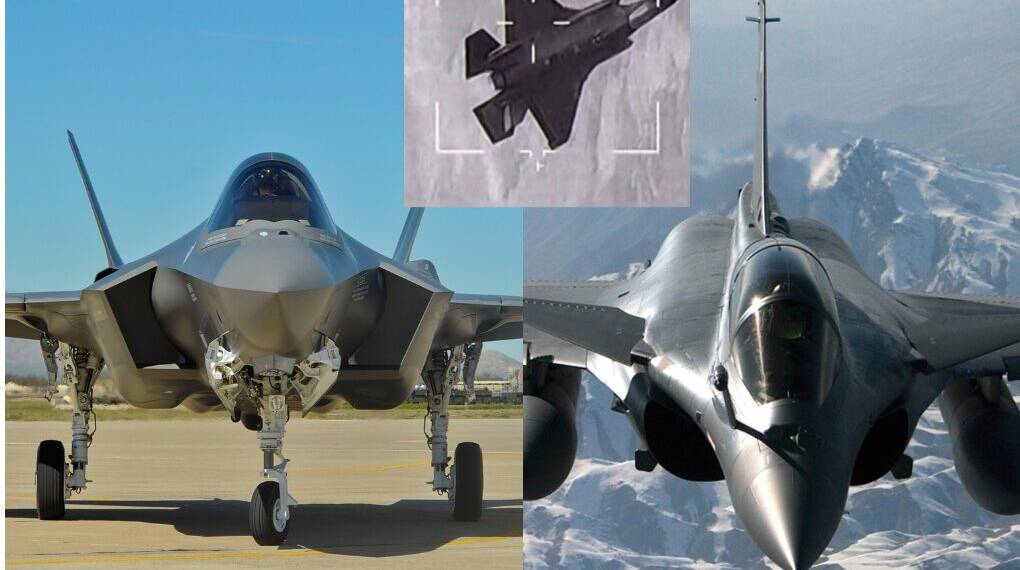Rafale versus F-35. Two of the world’s most advanced fighter jets — one a French 4.5-generation aircraft showcasing European aerospace independence, the other America’s fifth-generation stealth powerhouse.
But during NATO’s Trident Atlantic 25 exercise in Finland this summer, the unexpected happened. A French Dassault Rafale reportedly scored a simulated “kill” against a U.S. F-35A Lightning II in a close-range dogfight. The moment, captured in a 44-second video released by the French Air and Space Force, quickly went viral and sparked heated debates across defense forums, social media, and military circles worldwide.
The key question: Did the Rafale prove it can outmaneuver America’s stealth fighter? Or was this simply a training setup shaped by rules of engagement?
Finland’s NATO Debut: Trident Atlantic 25
The dogfight occurred during NATO’s Trident Atlantic 25, held in Finland from June 16 to 27, 2025.
For Finland, which joined NATO in April 2023, this was its first major NATO exercise — an event both symbolic and strategic given its 1,340-kilometer border with Russia.
The drill involved 40 aircraft and 1,000 personnel from the United States, United Kingdom, France, and Finland, and focused on Agile Combat Employment (ACE) — rapidly deploying and operating jets from dispersed bases in high-intensity scenarios.
Among Finnish F/A-18 Hornets, British Typhoons, French Rafales, and American F-35As, one one-on-one engagement stood out — the Rafale versus the F-35.
The Dogfight: Rafale’s Moment
During a Basic Fighter Maneuver (BFM) scenario — essentially a simulated dogfight — the Rafale used its Infrared Search and Track (IRST) system to lock onto the F-35.
In the French Air Force video, an audible command — “Take the shot” — signaled a simulated missile launch, meaning a confirmed “kill.”
This outcome reflected the Rafale’s strengths. With its delta-wing design, powered by twin Snecma M88 engines, and supported by the SPECTRA electronic warfare suite, the Rafale excels in agility and situational awareness in close-range combat.
By contrast, the F-35 was not designed primarily for dogfighting. Built for beyond-visual-range (BVR) combat, its stealth and sensors give it an advantage in long-range detection and engagement — but those benefits are limited in a knife-fight style scenario.
In this restricted setup, the Rafale held the upper hand. Yet, that does not automatically make it superior overall.
Beyond the Dogfight
Modern air combat increasingly favors detection-first and strike-first strategies rather than cinematic dogfights.
Here, the F-35 dominates. Its low-observable stealth, AN/APG-81 radar, and networked warfare integration enable it to engage threats from afar, often before an enemy even knows it’s there.
So while the Rafale’s win was significant within the exercise’s rules, in real-world conditions, the F-35 would likely use its strengths to avoid close-range engagements altogether.
Still, this wasn’t the first time a Rafale humbled a fifth-generation jet. In 2009, reports suggested a Rafale had managed a simulated kill against an American F-22 Raptor in a UAE exercise. The lesson: context matters, and no aircraft is untouchable.
The F-35’s Technical Troubles
Despite its dominance on paper, the F-35 has faced ongoing technical setbacks.
Engine problems and software glitches have repeatedly grounded fleets.
The notorious “canopy issue” once trapped pilots inside the cockpit.
In December 2022, an F-35B crashed in Texas during a test flight, raising further concerns.
The aircraft also carries a massive sustainment cost — nearly $40,000 per flight hour, making it one of the most expensive fighters to operate.
These issues fuel skepticism and create openings for competitors like the Rafale to win credibility and contracts.
Rafale’s Global Rise
The Rafale has steadily built a reputation as a reliable and combat-proven alternative.
France has secured export deals with India, Egypt, Indonesia, Qatar, and Greece. Its performance in Operation Sindoor — a major strike mission showcasing precision, survivability, and range under hostile conditions — earned it praise in India and boosted its global profile.
Unlike the F-35, which comes with strict U.S. export controls and interoperability requirements, the Rafale offers greater autonomy in deployment and weapons integration — a critical factor for countries seeking independence from Washington’s defense ecosystem.
The Global Arms Market: American Dominance vs. European Autonomy
The dogfight in Finland highlights a much larger competition — the battle for dominance in the global fighter jet market.
The F-35 dominates NATO: Belgium, Germany, Finland, Norway, and Poland have all bought into the program, enhancing interoperability but deepening reliance on the U.S.
The Rafale thrives in non-aligned markets: India, Egypt, Indonesia, and Qatar have all turned to Dassault Aviation as a counterweight to American jets.
Even within NATO, Greece opted for Rafales over F-35s, signaling a desire for balance against U.S. influence.
Thus, the Rafale and the F-35 don’t just represent competing aircraft — they symbolize two different defense ecosystems: U.S.-led integration versus European strategic autonomy.
The Rafale’s simulated victory over the F-35 at Trident Atlantic 25 does not make it the world’s best jet. But it proves one thing: no fighter is invincible.
The Rafale thrives in agility, close combat, and operational independence. The F-35 dominates in stealth, long-range engagement, and alliance integration.
As the global defense market heats up, the Rafale is increasingly seen as a strong competitor to America’s flagship fighter — not just in the skies, but in the political and economic battlefield of global arms sales.
In the end, this wasn’t just about one dogfight. It was about NATO dynamics, market rivalries, and the evolving future of airpower — where versatility, cost, and autonomy are just as decisive as stealth and sensors.








